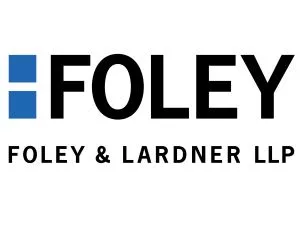- in European Union
- in European Union
- in European Union
- in European Union
- within Government, Public Sector, Criminal Law and Insurance topic(s)
- with readers working within the Healthcare industries
Various economic and industry experts have been speculating that we could start to see a pick up in merger and acquisition (M&A) activity over the next few months and as we enter 2026. Goldman Sachs is anticipating that 2026 could be a record-breaking year for M&A, predicting deal flow of about $3.9 trillion next year and continuing for the following years. Much of this speculation has been just that – and in many cases hard to predict due to an abundance of outside factors. But as we look past 2026, there is a strong expectation that between now and 2030, there will be a surge M&A activity in the pharmaceutical and other related biotechnology industries due to something more solid and predictable – a looming patent cliff which could result in the loss of hundreds of billions of revenue by leading pharmaceutical companies.
A patent cliff occurs when a pharmaceutical company's blockbuster drugs lose their patent exclusivity. This means that generic or biosimilar products enter the market and can make significant dents in revenue and erase billions in annual sales for large pharmaceutical companies. According to PitchBook, it is estimated that the next patent cliff could put approximately $180 billion in pharmaceutical companies' revenue at risk by 2030, with others estimating that number could be even higher. STAT even estimates it could be a total of $400 billion in lost revenue by 2033.
The pharmaceutical industry has long faced these waves of patent expirations that usually come in clusters. The most famous cliff occurred between 2011 and 2016, with drugs such as Lipitor and Singulair losing their protection. However, with this "super-cliff" between 2026 and 2030, we will see the loss of protection for drugs such as Keytruda, Opdivo, Eliquis, and Prevnar 13, just a small sample of the mega-blockbuster medications set to lose patent protection in the next five years. The upcoming "super-cliff" is expected to be the largest of these cyclical cliffs that the pharmaceutical industry has faced.
With the looming cliff, the pharmaceutical companies will look toward a variety of strategies to fill the revenue streams lost due to the loss of the patent and increased competition, beyond what they are doing through their own research and development (R&D) pipelines. So, as they have done so in past cycles, they are turning toward M&A to supplement these revenue streams. Acquiring smaller companies with later-stage pipelines or products that have or will soon come to market can provide them with a much faster route to bridge the gap with significantly less risk. It allows pharmaceutical companies to immediately access the innovation engines of biotech startups that can help them to offset the decline in their more mature product lines and further diversify their pipelines, scope, and personnel. Such activity also comes with an increased diversity in R&D strategies and new areas of growth and innovation – which have paid off with massive revenue in some areas in recent years, including the extraordinary success of GLP-1 drugs in just the last few years.
However that is not to say there will not be roadblocks, including high interest rates (although we are seeing cuts here), surprise regulation and tariffs (including recent pronouncements of upcoming tariffs related to offshore drug manufacturing), and greater competition overseas. But even with these concerns, pharmaceutical companies are no doubt strategizing and preparing for the loss of exclusivity from their blockbuster drugs and the financial losses that will accompany it.
We have all been waiting for the great M&A comeback, and in many industries, it consistently seems just around the next turn. However, in the biotech and pharma industries, we can see the cyclical trends that suggest there may be something greater than speculation and "dry powder" – a patent cliff to force large-cap companies to find additional revenue through innovation and acquisition. If history repeats itself, we should hopefully begin to see a flurry of activity in the industry that brings us even closer to the M&A boom we are all anticipating.
Such anticipated flurry of M&A activity also creates a unique opportunity to investors and innovators in biotech. After a number of years of hyperinflation of valuations and a lack of successful exits, the private biotechnology sector is undergoing a painful but strategically significant workforce contraction driven in part to funding constraints, which in turn is driven from a lack of investor interest given the previously overinflated valuations and lack of liquidity. With a large cyclical event such as the upcoming "patent cliff", a contraction of private-company valuations and an abundance of talent, innovators and investors have an opportunity to position themselves for successful liquidity in the upcoming cycle by establishing or investing in biotechnology companies focused on R&D and drug development that will be ideal candidates for the anticipated increased M&A activity caused by the "patent cliff" in the coming years.
And so, while the news is dominated by layoffs and closures of venture-backed biotech companies, such downturn may be setting up a greater opportunity for growth and liquidity for the same companies and investors because of the upcoming patent expirations.
The content of this article is intended to provide a general guide to the subject matter. Specialist advice should be sought about your specific circumstances.



